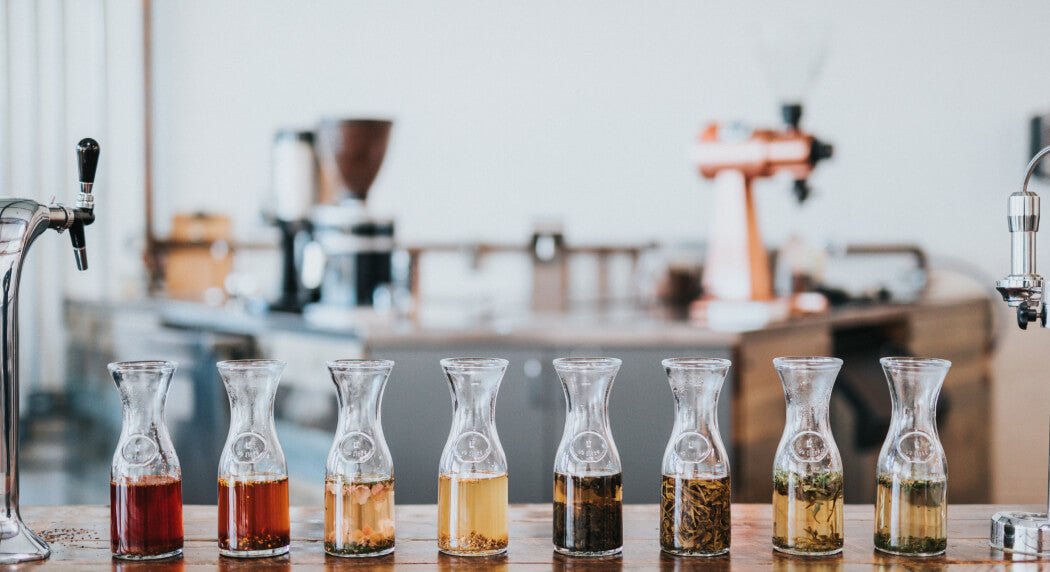whether it comes in a bag or as loose leaves,
whether you dip it or boil it,
whether you like it with milk or without,
whether you like it sweetened or spiced,
whether you like it as yellow white, green, oolong, herbal, fruity, purple, black or fermented –
one thing is certain: every little step in how you brew and have your tea changes its entire experience!
but the intricacies of tea begin much earlier. the journey of a tea leaf from the plantation to your cup is a fascinating blend (pun intended) of a multitude of factors - geography, temperature, harvesting time, processing method. and more!
all teas come from the same plant - the camellia sinensis. but before we can savour the fruity notes of cranberry or smell the soothing aromas of an apple spiced blend, each batch of tea leaves goes through various processes. processes that help distinguish it as green, white, oolong, or black.
this long process begins with harvesting the tea leaves at just the right time of their maturity. more than 4000 leaves produce 1 kg of tea – let the mind process that! talking of processing, traditionally teas go through four stages of processing - withering, rolling, oxidation and drying.
each tea type is oxidised differently, yet precisely. temperatures and time spent for each phase determine the colour, the aromas and the flavour of the tea.
herbs and fruits that are integral to the richness of blended teas. tea tasters carefully curate each of these, then grade each batch of this tea to determine quality and thus, the price.
the tea tasters’ tasks are incredibly complex, because the process of tea production is, well, layered. to say the least!
a single batch of tea can take up to a week from harvest before it can be ready to reach your cup.
by itself, tea flavours and colours have a wide range depending on where they are harvested, how long after the harvest do they sit out before being processed, how much oxidation they pass through. e.g. green tea is least oxidised while black tea is most. the range even depends on what the temperature of the water is in which it's brewed.
these complexities are made richer with blended teas. after the tea leaves are dried, dried fruits or fruit extracts or herbs are blended in the correct and precise quantities for the desired strength of flavour and aroma.
lavender, basil, ginger, jasmine, apple, cinnamon, cardamom, moringa, hibiscus, lemon and a host of other extracts are used with mostly green teas to add that touch of special indulgence to your tea experience. at sy’a this is even more special as we don’t aim for mere indulgence, we go for ‘beyond indulgence’ as our tagline suggests 😊
tea making is a gentle, delicate art. whether by humans or machines, each batch of tea is handled with incredible care to ensure that the flavour is spread uniformly among the leaves, that the moisture content is reduced to just the right amount, and that you are served a perfect cup.
tea comes from one variety out of 200 varieties of a single plant, but is made unique through each step of processing. each step is unique just like each type of leaf, each added flavour, each blend of these unique flavours and more. all of them are special and all of them are mindfully brought to your cup
the experience of a cup of sy’a tea captures this uniqueness. we are often asked which is our favourite. it is akin to asking an artist which is his preferred piece of work or a mother who her favourite child is. we cannot really pick one over the others, but we can say this – each is unique, each is special, each is beyond indulgence because each one of them is indisputably sy’a!





